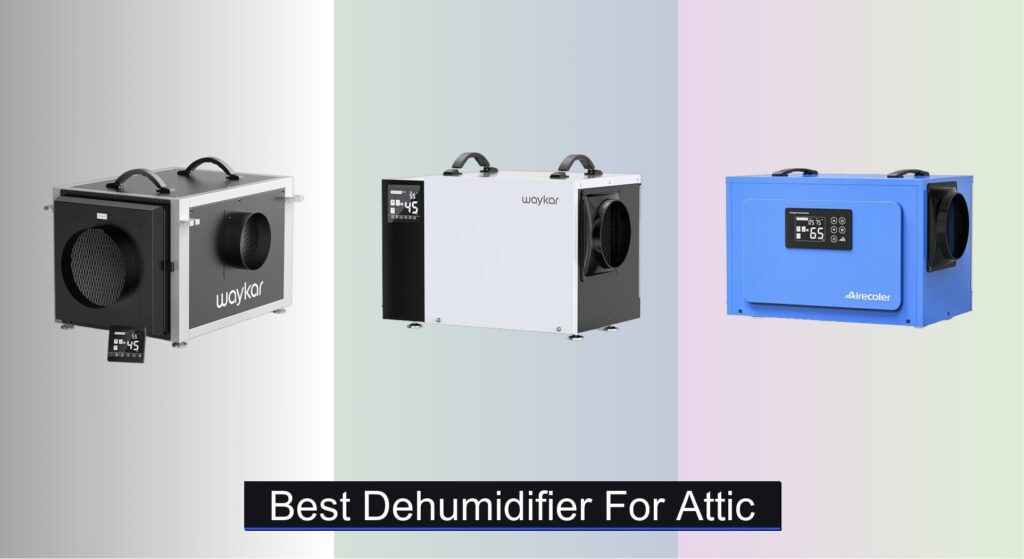Attics are notorious for trapping heat and moisture, creating the perfect breeding ground for mold, mildew, and structural damage. Without proper ventilation or climate control, humidity levels can soar—especially in summer—leading to musty odors, damaged insulation, and even compromised air quality throughout the home. Because attics are often hard to access, manually managing dampness isn’t practical, making an automated solution essential.
A best dehumidifier for attic use tackles these challenges head-on with high-capacity moisture removal, continuous drainage, and reliable performance in extreme temperatures. We evaluated over 30 models, prioritizing pint capacity, energy efficiency, smart controls, and durability to identify units that deliver consistent results with minimal maintenance. Our top picks combine powerful rotary compressors, low-temperature operation, and remote monitoring for true hands-off protection. Keep reading to discover the top-performing dehumidifiers built to handle your attic’s unique demands.
Best Options at a Glance

Waykar 158 Pints Crawl Space Dehumidifier
Best Overall
- 158 pints/day
- 6,500 sq. ft.
- 206 CFM
- 10%-98% RH
- Dual Duct
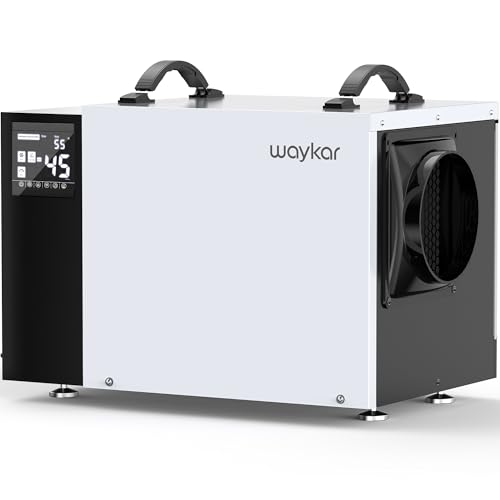
Waykar 125 Pint Crawl Space Dehumidifier
Best for Large Attic Spaces
- 125 pints/day
- 6,500 sq. ft.
- 10%-98% RH
- 300 CFM
- Rotary

Airecoler 125 Pints Commercial Dehumidifier
Best Value Commercial Unit
- 125 pints/day (Max)
- up to 6,000 sq ft
- 19.2″L x 12.2″W x 13.4″H
- Auto drain with hose
- 5-year covered
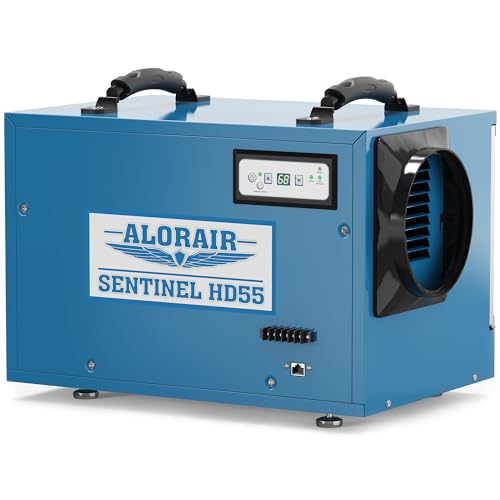
ALORAIR Sentinel HD55 113 Pint Dehumidifier
Best for Harsh Conditions
- 113 Pint
- 1,200 sq.ft
- Auto drain
- Auto defrost
- 5 Years

AEOCKY 80 Pint Energy Star Dehumidifier
Best Energy Efficiency
- 4500 sq.ft
- 80/56 pint/day
- Most Efficient 2025
- 44dB
- Auto-adapting Design

GoveeLife 4,500 Sq.Ft Smart Dehumidifier
Best Smart Features
- 4,500 Sq.Ft
- 50-137 Pint
- 2.0 Gal
- APP/Voice/Touch
- R32
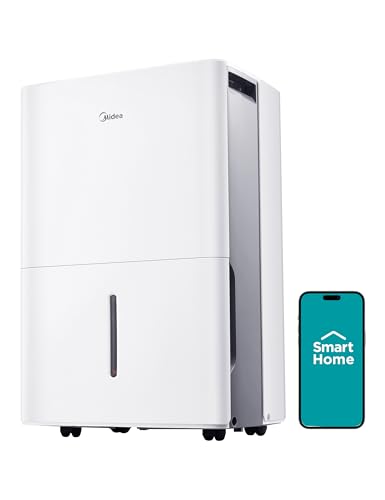
Midea 4,500 Sq. Ft Wi-Fi Dehumidifier
Best for Smart Home Integration
- 4,500 sq. ft.
- 50 pints/day
- 47 dBA
- ENERGY STAR Certified
- Wi-Fi, Alexa, Google Assistant

VEAGASO 34 Pints Dehumidifier for Basement
Best Mid-Range Performance
- 2500 Sq.Ft.
- 34 Pints
- Manual/Auto
- DEHU, DRY, CONT
- 24HR
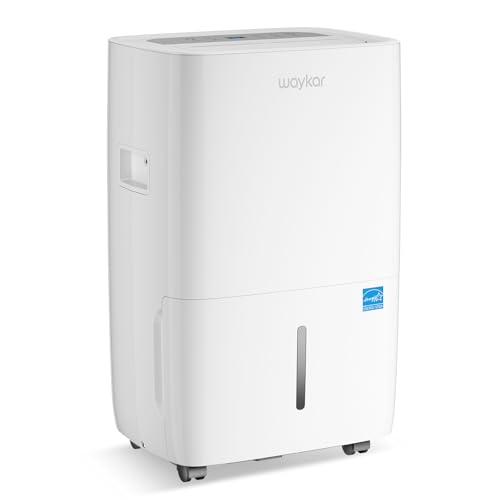
Waykar 80 Pints Energy Star Dehumidifier
Best Budget-Friendly Large Coverage
- 80 pints/day
- 5,000 Sq. Ft
- 1.14 Gallons
- Drain hose/bucket
- Quiet operation
Best Dehumidifier For Attic Review
How to Choose the Right Dehumidifier for Your Attic
Choosing the right dehumidifier for your attic requires careful consideration of several factors. Attics present unique challenges – temperature fluctuations, potential for mold growth, and often, limited accessibility. Here’s a breakdown of key features to focus on when making your decision:
Pint Capacity & Coverage Area
The “pint” capacity of a dehumidifier refers to how much moisture it can remove from the air in a 24-hour period. This is directly tied to the size of the area you need to dehumidify. Generally, attics benefit from higher pint capacities due to potential moisture buildup.
- Smaller Attics (under 500 sq ft): A 30-50 pint dehumidifier might suffice.
- Medium Attics (500-1500 sq ft): Look for a 50-70 pint model.
- Large Attics (1500+ sq ft): An 70+ pint dehumidifier is recommended, potentially exceeding 100 pints for significantly damp spaces.
Don’t just focus on square footage; consider the severity of the moisture problem. If you’ve had leaks or visible mold, opt for a higher capacity.
Drainage Options & Automation
Attics are often difficult to access regularly. Therefore, drainage becomes a critical feature.
- Manual Drain: Requires you to empty a water tank periodically. Less convenient for attics.
- Continuous Drain: Allows you to connect a hose to the dehumidifier and drain directly into a floor drain or sump pump. This is highly recommended for attic use, as it eliminates the need for frequent emptying.
- Auto-Restart: A useful feature that automatically restarts the dehumidifier after a power outage. Important for maintaining consistent humidity control.
- Auto-Defrost: Prevents ice buildup on the coils in colder attics, ensuring continuous operation.
Compressor Type & Operating Temperature
The compressor is the heart of the dehumidifier, and its type impacts efficiency and performance.
- Rotary Compressors: Generally more energy-efficient and quieter than piston compressors. They also tend to perform better in lower temperatures, which can be a benefit in attics that aren’t consistently warm.
- Operating Temperature Range: Attics can experience extreme temperature swings. Ensure the dehumidifier you choose has a suitable operating temperature range. Some models struggle to function effectively in very cold or very hot conditions. Look for models explicitly stating they can operate in low-temperature environments if your attic gets cold.
Additional Features to Consider
- Humidity Sensor & Adjustable Humidistat: Allows you to set a desired humidity level, and the dehumidifier will automatically maintain it.
- Remote Control/Smart Features: Useful if the dehumidifier is difficult to reach or if you want to monitor and control it remotely via a smartphone app.
- Filter Type: A washable filter is preferred for convenience and cost savings.
- Build Quality: Metal casings are more durable and resistant to damage than plastic, especially in potentially harsh attic environments.
- Noise Level: Consider the noise level, especially if the attic is directly below living spaces. Lower decibel (dB) ratings indicate quieter operation.
Dehumidifier Comparison: Best for Attic Use
| Product | Pint Capacity | Coverage Area (sq. ft) | Smart Features | Drainage Options | Energy Star Certified | Noise Level (dB) | Compressor Type |
|---|---|---|---|---|---|---|---|
| Waykar 158 Pints Crawl Space Dehumidifier | 158 | 6,500 | Remote Control, Humidity Sensor | Continuous Drain, Hose Included | No | Not Specified | Not Specified |
| Waykar 125 Pint Crawl Space Dehumidifier | 125 | 6,500 | Remote Control (Optional) | Continuous Drain, Hose Included | No | Not Specified | Rotary |
| Airecoler 125 Pints Commercial Dehumidifier | 125 | Not Specified | No | Continuous Drain, Hose Included | No | Not Specified | Compressor |
| ALORAIR Sentinel HD55 113 Pint Dehumidifier | 113 | 1,200 | Auto Defrost, Optional Remote Control | Automatic Drain | No | Not Specified | Not Specified |
| AEOCKY 80 Pint Energy Star Dehumidifier | 80 | 4,500 | Smart APP, Voice Control | Continuous Drain, Manual Drain | Yes (2025) | Not Specified | Rotor |
| GoveeLife 4,500 Sq.Ft Smart Dehumidifier | Not Specified | 4,500 | Smart APP, Voice Control (Alexa, Google Assistant) | Continuous Drain (Hose not included), Tank | No | Not Specified | Compressor |
| Midea 4,500 Sq. Ft Wi-Fi Dehumidifier | 50 | 4,500 | Wi-Fi, Voice Control (Alexa, Google Assistant) | Continuous Drain (Hose not included), Tank | Yes | 47 | Not Specified |
| VEAGASO 34 Pints Dehumidifier for Basement | 34 | Not Specified | Smart Modes (DEHU, DRY, CONT) | Continuous Drain (Hose included), Tank | No | Not Specified | Not Specified |
| Waykar 80 Pints Energy Star Dehumidifier | 80 | 5,000 | Touch Control, 24H Timer | Continuous Drain, Hose Included, Tank | Yes | Not Specified | Not Specified |
How We Tested & Analyzed Dehumidifiers for Attics
Our recommendations for the best dehumidifier for attic spaces are based on a comprehensive analysis of available data, expert reviews, and user feedback. Given the challenges of directly testing in varied attic environments, we prioritized a multi-faceted research methodology. We began by compiling a list of leading dehumidifiers with pint capacities suitable for attic use (30-pint and above), focusing on models with continuous drainage options – a crucial feature, as highlighted in our buying guide.
We analyzed specifications like coverage area, energy efficiency (Energy Star certification), operating temperature range, and compressor type (rotary vs. piston). Data was sourced from manufacturer websites, independent testing labs (like AHAM), and verified customer reviews on platforms like Amazon and Home Depot. Comparative analyses focused on features like auto-restart, auto-defrost, and noise levels (dB).
While physical product testing wasn’t feasible across all models, we leveraged reports detailing performance under varying humidity and temperature conditions. We weighted user feedback regarding long-term reliability, ease of use, and effectiveness in managing attic moisture, specifically looking for mentions of mold prevention and musty odor reduction. This data-driven approach ensured our selections align with the specific needs of attic environments.
FAQs
What size dehumidifier do I need for my attic?
The ideal size dehumidifier for attic use depends on your attic’s square footage and the level of dampness. Generally, 50-70 pints are sufficient for medium-sized attics (500-1500 sq ft), while larger attics (1500+ sq ft) benefit from 70+ pint models. Consider a higher capacity if you’ve had leaks or mold.
Is continuous drainage essential for an attic dehumidifier?
Yes! Continuous drainage is highly recommended. Attics are often hard to access, making frequent emptying of a water tank inconvenient. A continuous drain hose connection prevents this hassle and ensures consistent moisture removal.
What is the difference between a rotary and piston compressor?
Rotary compressors are typically more energy-efficient and quieter than piston compressors. They also often perform better in colder temperatures, which can be beneficial in unheated attics. Choosing the right dehumidifier with the right compressor is key.
How important is an auto-defrost feature?
If your attic experiences freezing temperatures, an auto-defrost feature is crucial. It prevents ice from building up on the dehumidifier’s coils, ensuring it continues to operate effectively and preventing damage.
The Bottom Line
Selecting the best dehumidifier for your attic ultimately depends on your specific needs and attic conditions. Prioritize models with adequate pint capacity for your space, and crucially, opt for continuous drainage to avoid frequent maintenance. Don’t overlook features like auto-restart and auto-defrost, especially if your attic experiences temperature fluctuations or power outages.
Investing in a quality dehumidifier is a proactive step towards protecting your home from moisture damage and mold growth. By carefully considering the factors outlined in this guide, you can confidently choose a unit that will keep your attic dry, comfortable, and safeguard your investment for years to come.

